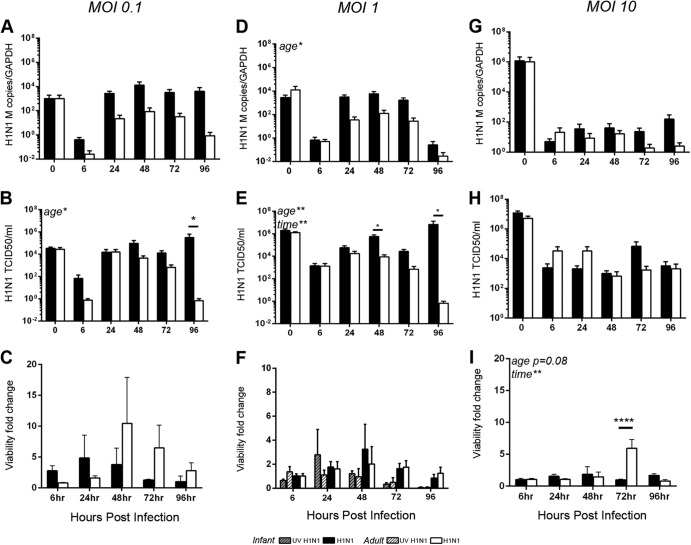FIG 1.
H1N1 replication and cell viability in infant and adult airway epithelial cell cultures. Cultures from infant and adult monkeys were inoculated with live or UV-inactivated (UV) H1N1 virus at MOIs of 0.1, 1, and 10, followed by evaluation of viral replication and cell viability at 6, 24, 48, 72, and 96 h postinfection (n = 3 to 5 for each age group). The zero time point refers to the viral inoculum. (A, D, and G) Viral RNA and GAPDH levels in the apical wash fluid were measured by RT-PCR. Absolute numbers of H1N1 matrix (M) gene copies were calculated based on a standard curve and are reported relative to the GAPDH copy number. (B, E, and H) Replicating virus in apical wash samples at each time point was evaluated by TCID50 assays. As no viral RNA or replicating virus was detected in any culture infected with UV-inactivated virus, these were excluded from the graphs. (C, F, and I) Cell viability was assessed by alamarBlue assays. The fold change in fluorescence over that for mock-infected controls is reported for both UV-inactivated and live viruses at each time point. Bar graphs represent means and SEM. Statistically significant results of a two-way ANOVA comparing age and time postinfection are indicated at the top left of the graphs, while horizontal bars show results of Holm-Sidak posttests. *, P < 0.05; **, P < 0.005; ****, P < 0.0001.

